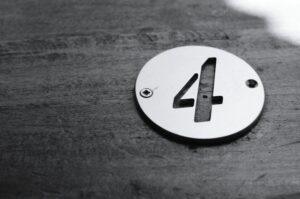Technical analysis is the study of past price patterns. It is used to attempt to predict future prices by analyzing the patterns formed on charts. Technical analysts believe that these patterns can be used to identify opportunities to buy and sell securities. There are a variety of different technical analysis techniques that can be used to analyze price patterns. Some of the more common techniques include candlesticks, moving averages, and trendlines.
Technical analysis can be used to trade a variety of different securities, including stocks, futures, and options. Technical analysis can also be used to trade a variety of different markets, including foreign currencies, commodities, and ETFs. When you use a resource like financecharts.com, you can aid your technical analysis with access to free charts and stock research going back 20 years for US public companies. Let’s take a look at some technical analysis strategies.
Technical Analysis: Candlesticks
Candlesticks are one of the oldest forms of technical analysis and are still used by traders today. They are simple to understand and can be used to identify trend reversals and trend continuation. There are three main types of candlesticks patterns: reversal patterns, continuation patterns, and abandoned babies.
Reversal patterns are used to identify potential trend reversals. The most common reversal pattern is the hammer. A hammer is a bullish reversal pattern that is formed when a security falls sharply lower but then rallies to close above its opening price. The hanging man is the bearish counterpart to the hammer and is formed when a security falls sharply lower but then rallies to close below its opening price.
Continuation patterns are used to identify potential trend continuations. The most common continuation pattern is the bullish engulfing pattern. A bullish engulfing pattern is formed when a security opens higher than the previous day’s close but then falls to close lower than the previous day’s open. The bearish engulfing pattern is the bearish counterpart to the bullish engulfing pattern and is formed when a security opens lower than the previous day’s close but then rallies to close higher than the previous day’s open.
The abandoned babies pattern is used to identify potential trend reversals or continuations. An abandoned baby is a bullish pattern that is formed when a security falls sharply lower but then rallies to close in the middle of the previous day’s range. The bearish abandoned baby is the bearish counterpart to the bullish abandoned baby and is formed when a security falls sharply lower but then rallies to close in the upper half of the previous day’s range.
Technical Analysis: Moving Averages
Moving averages are one of the most common technical indicators used by traders. They are simple to use and can be very effective in helping to identify trends in prices. There are a number of different types of moving averages, but the two most common are the simple moving average (SMA) and the weighted moving average (WMA).
The SMA is calculated by adding the closing prices for a given number of time periods and then dividing by the number of time periods. The WMA is calculated by adding the closing prices for a given number of time periods and then weighting the prices according to their importance. The most important price is given the greatest weight, and the least important price is given the least weight. Moving averages can be used to identify trends in prices and can also be used to identify support and resistance levels.
Technical Analysis: Trend Lines
A more popular technical analysis tool is the trend line. A trend line is a graphical representation of a trend and is used to identify potential support and resistance levels. Upward trend lines indicate a bullish trend and are created by connecting a series of higher lows. Downward trend lines indicate a bearish trend and are created by connecting a series of lower highs. Sideways trend lines indicate a neutral trend and are created by connecting a series of highs and lows that are relatively close together.
Trend lines can be used to help traders identify when a security is in a strong or weak trend and can be used to generate trading signals. For example, a trader might enter a long position when a security breaks above an upward trend line or enter a short position when a security breaks below a downward trend line. Trend lines can also be used to help traders determine when a trend is reversing. For example, a trader might exit a long position when a security breaks below an upward trend line or exit a short position when a security breaks above a downward trend line.
Technical analysis is a popular method of analyzing securities because it is relatively easy to learn and can be used to generate trading signals. However, like all investment strategies, technical analysis is not without risk and should only be used as part of a larger investment plan.








![Read more about the article [Funding roundup] LimeChat, EximPe, Glip, iTribe, HBox, Laurik, Myraah raise early-stage deals](https://blog.digitalsevaa.com/wp-content/uploads/2022/04/ImagesFrames40-1649759992798-300x150.png)
